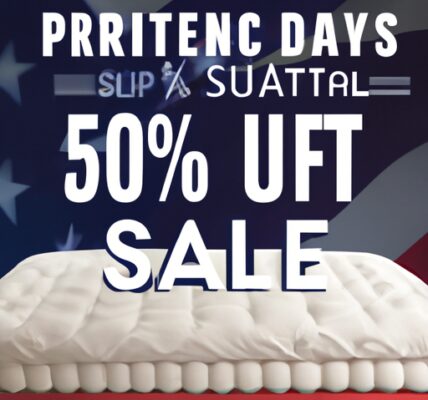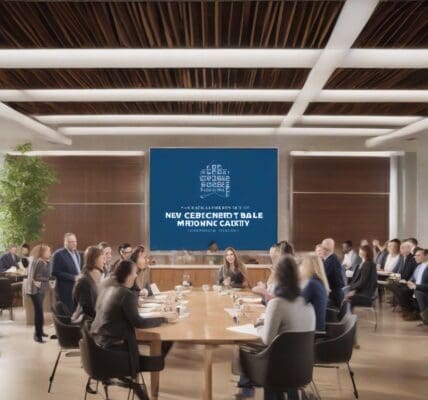The Art of Persuasion in E-Commerce: Boosting Conversion Rates through Effective Digital Marketing Strategies
In the fast-paced world of e-commerce, capturing the attention of potential customers is only half the battle. Converting those brows into sales requires a strategic approach that addresses consumer behavior, leverages digital marketing tools, and optimizes the user experience. Understanding how to effectively persuade online shoppers can significantly improve conversion rates, which is crucial in a competitive digital marketplace.
One of the fundamental principles of persuasion in e-commerce is establishing trust. A study conducted by PwC revealed that 59% of consumers would avoid a brand altogether if they felt their data was not handled securely. Displaying trust signals—such as SSL certificates, customer reviews, and well-known payment methods—can reassure potential buyers that their online experience is safe. For example, Amazon provides comprehensive product reviews and ratings, which not only build credibility but also enhance the decision-making process for consumers.
Another key element of persuasion involves understanding the consumer journey. Mapping out this journey can help identify critical touchpoints where interventions can significantly boost conversions. According to research by the Baymard Institute, 69.57% of online shopping carts are abandoned. By ensuring a seamless checkout process—Eliminating unnecessary steps, providing guest checkout options, and clear progress indicators—online retailers can effectively reduce cart abandonment rates. A study by the e-commerce platform Shopify found that simplifying the checkout process can lead to an increase in conversions by up to 35%, illustrating the importance of optimizing this experience.
Effective product page design also plays a vital role in persuasive selling. High-quality images, engaging descriptions, and detailed specifications can captivate consumers and entice them to make a purchase. For instance, furniture retailer Wayfair employs a combination of 360-degree views and augmented reality tools, allowing consumers to visualize how a piece would fit in their homes. This innovative approach results not only in higher engagement but also supports informed decision-making.
Another persuasive tactic involves leveraging social proof. Research from the Nielsen Global Trust in Advertising report indicates that 92% of consumers trust recommendations from friends and family over all other forms of advertising. This statistic highlights the importance of incorporating user-generated content, such as video testimonials, photo sharing on social media, and reviews visible on product pages. Retailers that encourage customers to share their experiences create a sense of community, which can influence new customers to make a purchase. Brands like Glossier have effectively utilized Instagram, transforming their customers into advocates, which drives both credibility and conversions.
Personalization is equally significant in maximizing conversion rates. By utilizing data analytics and machine learning, online retailers can create tailored shopping experiences that resonate with individual preferences. According to Epsilon, 80% of consumers are more likely to make a purchase when brands offer personalized experiences. For instance, Netflix excels in this area by curating viewing recommendations based on user behavior, enhancing customer loyalty and retention. Similarly, e-commerce sites can implement personalized product recommendations, email campaigns, and remarketing strategies to engage potential buyers further.
Email marketing remains a vital tool for persuasion in e-commerce. In a report from HubSpot, email marketing has an ROI of $42 for every $1 spent, underscoring its effectiveness. Targeted emails, particularly cart abandonment reminders, can significantly persuade customers to return to complete their purchases. Retail giants like Zara send personalized follow-ups to consumers who leave items in their shopping carts, often with discounts or special promotions. These well-crafted emails tap into the urgency and offer a gentle nudge, effectively converting hesitant shoppers.
Another vital aspect is the use of urgency and scarcity in marketing messages. The fear of missing out (FOMO) is a powerful motivator in consumer behavior, and incorporating elements of urgency—such as limited-time offers, low stock notifications, or flash sales—can lead to prompt purchases. A study by the University of Southern California demonstrated that scarcity messages compel consumers to act quickly, as the perceived value of a product increases.
Finally, analyzing website analytics is crucial for understanding what influences consumer behavior. Tools such as Google Analytics and heatmaps enable retailers to track user engagement and identify pages where drop-offs occur. By assessing this data, brands can make informed decisions about where to enhance their user experience and implement effective persuasive tactics that drive higher conversion rates.
In summary, the art of persuasion in e-commerce hinges on building trust and enhancing the customer journey through strategic digital marketing tactics. By focusing on user experience, personalization, social proof, effective product presentation, and timely communication, online retailers can significantly boost conversion rates. The ever-growing digital landscape offers endless opportunities for brands to connect meaningfully with consumers and turn casual browsing into lasting relationships.












